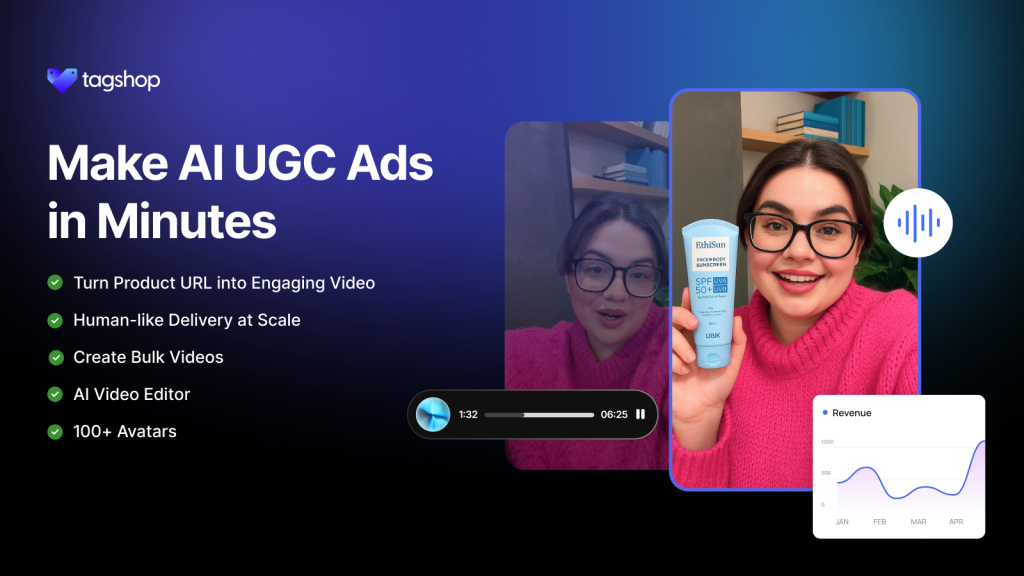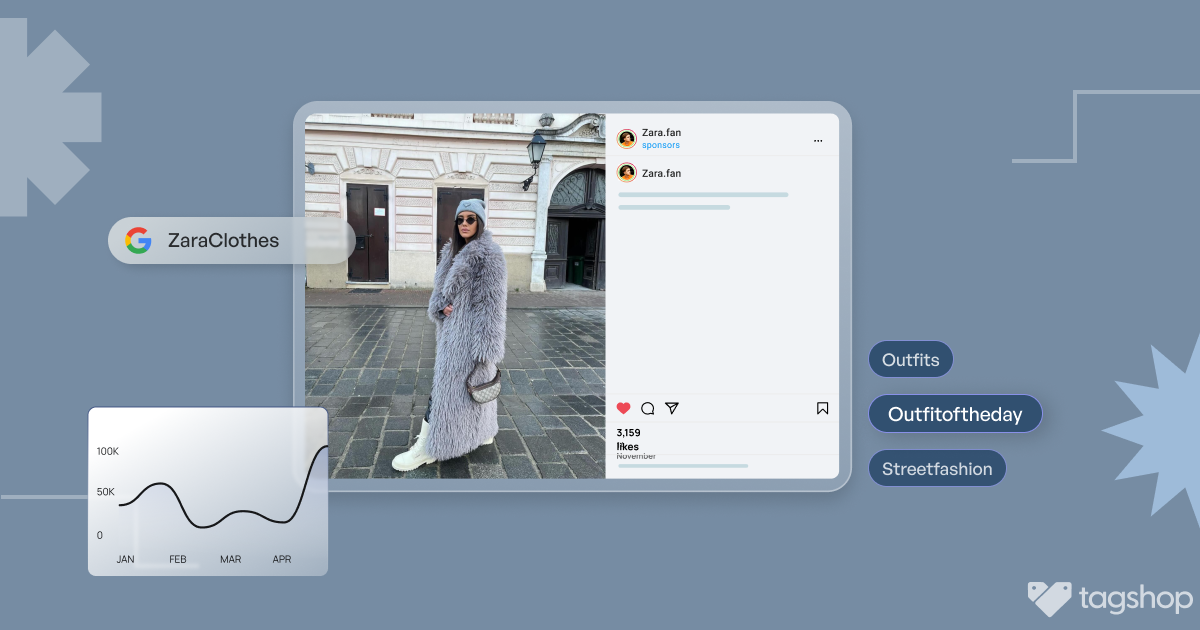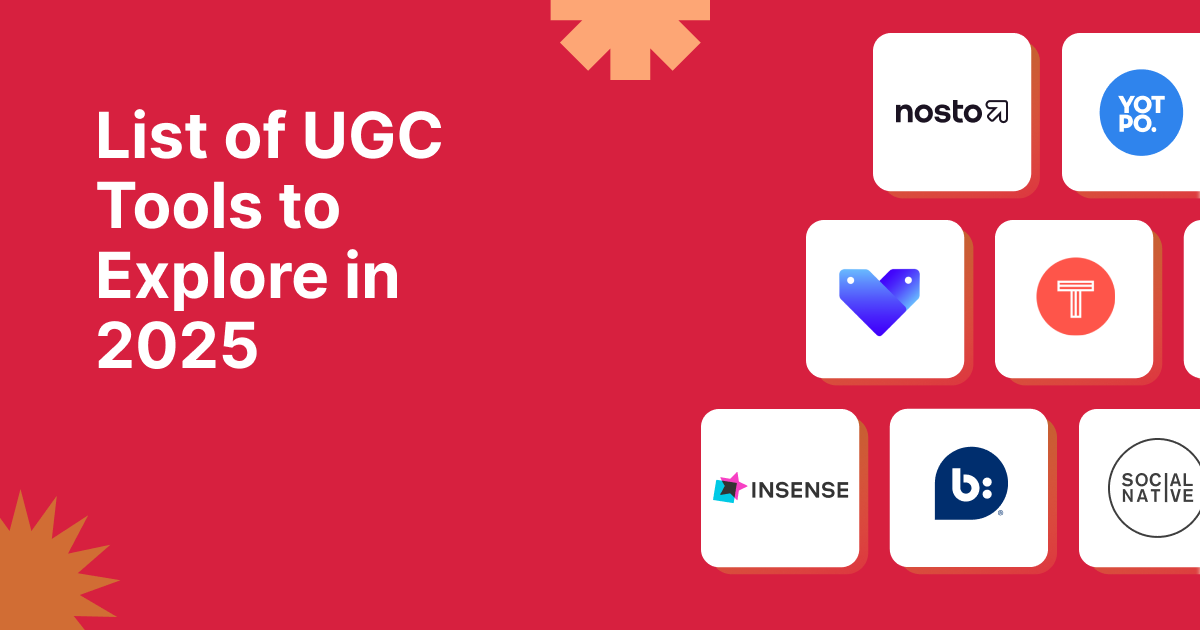UGC For SEO: Strategies, Benefits & Examples
As the digital marketing world rises, user-generated content has emerged as the creative ad campaign viral social media buzzword. Trust us; it is a powerful tool for search engine optimization.
So why does UGC matter so much for SEO?
It’s pretty straightforward: real voice, authentic insights, genuine experience, and abundant organic keywords. This is a goldmine of authenticity that search engines can’t get enough of. When you leverage UGC, the SEO of your website is also impacted, leading to better brand visibility.
So, if you are looking for ways to master this area, this is the place to get a complete guide to UGC in SEO for your business.
Example Of UGC in SEO
Let us take an example of an ecommerce website. This online store selling running shoes encourages customers to leave reviews on product pages.
SEO Impact:
- Users write detailed reviews mentioning specific features, such as “best running shoes for marathons” or “lightweight jogging shoes.”
- These reviews generate long-tail keywords that potential buyers search for on Google.
- Search engines index this fresh content, improving rankings for niche queries.
- Google may display review-rich snippets, increasing click-through rates (CTR).
Benefits of UGC in SEO
Here are some of the benefits of UGC in SEO for your business.
1. Improved Search Rankings
User-generated content has become decisive in increasing search engine rankings. Even a professional SEO agency like Oxygen, it is an ultimate SEO agnecy, recognizes that one of the primary benefits of UGC is its contribution to enhanced SEO and Generative Engine Optimization (GEO). Many leading SEO services now emphasize UGC as a cost-effective strategy to boost keyword diversity and audience trust. When brands encourage customers to share UGC reviews, testimonials, or social media posts, they create fresh, relevant content that search engines favor. This influx of new material signals to search engines that a website is active and engaging, which can lead to better rankings.
2. Enhanced User Engagement
UGC, such as reviews, comments, reviews, or discussion forums, invite users to participate actively. Users who engage with these elements often read and respond to your site more.
Google’s algorithm considers dwell time users spend on the page. The longer users stay, the more likely Google will rank your page higher, believing it offers valuable content. With strategies used by ASA Austin Seo, UGC motivates users to spend more time on your site, which ultimately helps with rankings.
3. Boosted Brand Trust and Credibility
Most consumers (79%) perceive it as more credible than content directly created by brands, making it a significant tool for generating more trust and credibility. But how does this happen?
User-generated content resonates with the target audience because it comes from real customers who share genuine experiences and opinions. This helps bridge the gap between brands and their audience, making messages more relatable and trustworthy.
Furthermore, when potential customers see others like them enjoying a product or service, they will likely believe in its value. As a result, user-generated content increases brand trust, consumer engagement, and loyalty.
4. Cost-Effective Content Creation With UGC
Cost-effective content involves producing high-quality material without overspending.
Instead of spending heavily on content like photos, EOs, or testimonials, businesses can easily use the content their users already create, often for free.
This not only saves money but also creates a genuine connection with consumers. This hPotentialmers are often more influenced by their peers’ real stories and visuals.
5. Better Understanding of Your Audience
A deeper understanding of your audience is the first step to good communication and marketing. Knowing their preferences, needs, and behaviors helps you make your messages resonate with them even more. You do not have to subscribe to premium tools to gain deeper insights.
Essential UGC tools such as surveys, social media analytics, and customer feedback can be used to collect enough data.
Such information allows one to understand trends and everyday interests, creating targeted strategies to engage the audience. Knowing the audience demographics and psychographics can help create content directly related to their tastes, strengthening the connection and leading them closer to achieving your goals.
Strategies for Effectively Using UGC for SEO
Here are some major strategies for effective UGC in SEO.
1. Encouraging UGC Creation:
Brands implement severaBrands implement several effective strategies for user-generated content. Hosting contests and giveaways is the best way to motivate users to share their experiences and creativity. This approach also offers the allure of rewards. Incentivizing reviews and testimonials also encourages customers to share their opinions, providing valuable insights and social proof for potential buyers.
Brands can also use a dedicated hashtag, unifying the customers’ content with a common theme. This allows the brands and users to engage and showcase on social media platforms.
Running social media campaigns invites users to become the main character and actively participate in the UGC campaign, thus raising the brand’s visibility and community engagement.
In addition, Q&A sections allow customers to ask questions and share their knowledge. This further encourages interaction and collaboration in the brand’s community. Using these methods, brands can produce authentic content that will resonate with their audience.
2. Collecting and Curating UGC
Brands can ask their audience to share their content through comments, hashtags, or social media campaigns. When ample UGC is available, it helps you collect and curate UGC.
Engaging with customers by asking them to post their experiences or opinions generates excitement and a sense of community. Offering incentives such as discounts or featuring user content on official channels can motivate users to participate.
Once the UGC is collected, the following process is curation. This includes selecting the most relevant and highest-quality content that fits the brand’s message and values. Curated content is not just about sharing it but also about attribution and acknowledgment of the creators. It can increase brand loyalty and encourage consumers to share their content in the future.
3. Optimizing UGC for Search Engines
Conducting thorough keyword research helps you understand the terms your audience is searching for. Integrating these keywords naturally within user-generated content (UGC) enhances search visibility and ensures that the content remains relevant and engaging for readers.
Create optimized tiles and descriptions that accurately reflect the UGC. Recategorize content using relevant tags. This will make finding the content easier for search engines and users. Structured titles and descriptions can significantly improve click-through rates and user engagement. Partnering with a link building agency can also strengthen your SEO efforts by acquiring high-quality backlinks that boost your site’s authority and ranking.
Integrating UGC into Your Website:
Adding user-generated content to your website increases trust and credibility among users. To effectively use UGC, place it on relevant pages that best resonate with your website visitors. The seamless integration of UGC often benefits from professional web agency services, which help ensure the content is visually engaging and easy to navigate.
Consider creating dedicated sections or galleries highlighting customer reviews, testimonials, or UGC photos. Additionally, embedding social media feeds can showcase real-time engagement and foster community. Brands allow the customer to upload his experience along with the entire website experience by making it familiar and interactive for potential buyers opting for UGC.
Promoting user-generated content is one of the most engaging and authentic ways to promote the brand. This can be achieved by sharing UGC on all social media channels, sharing actual customer experiences, and creating interaction within the community. Integrating UGC in email marketing campaigns can make content more personalized and relatable, which may have a higher chance of opening and clicking for subscribers.
Partnering with influencers multiplies the effects of UGC. Influencers can share actual customer stories, increasing their credibility. CDs using these strategies could easily connect with the audience and build a sense of community, leading to loyalty.
Best Practices for Including UGC in SEO
1. Authenticity and Transparency
It is crucial to prioritize genuine user-generated content to propagate trust with your audience. Authentic content resonates more deeply, creating a strong connection with the users and enhancing brand loyalty. Encouraging real experiences and honest reviews shows the actual value of your product or service.
2. Moderation and Quality Control
One essential solution is to implement a comprehensive moderation process so that UGC can realign your brand’s standards. This process is clear for acceptable content, so it will prevent the spread of inappropriate or low-quality submissions and maintain your brand’s reputation.
3. Legal Considerations
When using user-generated content, always be sensitive to copyright and privacy laws. Contributors must be granted permission to use the content, and adhering to necessary regulations concerning user privacy and intellectual property can help avoid eventual legal issues.
4. Monitoring and Measurement
Key settlement rates, conversion rates, and organic traffic are key performance indicators that need to be analyzed frequently to improve your approach and indicate the value of UGC in helping increase engine visibility and driving engagement.
Tools for Using UGC in SEO
Here are some of the UGC tools that brands can utilize for their campaigns:
1. Tagshop

Tagshop is an AI UGC platform that helps brands create UGC style ads without the need for real creators, filming, or editing. Designed for modern marketers, Tagshop uses advanced AI to generate realistic videos featuring lifelike avatars, natural-sounding voiceovers, and engaging scripts tailored to your product or campaign goals.
Whether you’re promoting a new product, running ads on Instagram, TikTok, or YouTube, or looking to add fresh video content to your website or emails, Tagshop streamlines the entire video creation process.
You simply input your product details, choose a tone or style, and Tagshop delivers polished, high-converting UGC-style videos in minutes.
It’s a scalable, cost-effective alternative to traditional UGC, giving you full creative control, fast turnaround times, and the ability to produce personalized content at scale.
Key Features of Tagshop:
1. AI UGC Video Generator
Generate natural-looking UGC videos using AI-generated avatars, realistic voices, and personalized scripts.
2. Script Customization
Add your product details, features, tone, and goals—Tagshop’s AI crafts engaging video scripts that match UGC vibes.
3. Realistic Avatars & Voiceovers
Choose from diverse AI avatar options with natural expressions and gestures and human-like voiceovers.
4. Multi-Format Outputs
Export videos optimized for platforms like Instagram Reels, TikTok, Facebook Ads, YouTube Shorts, etc.
Use Cases:
- Ad Creatives (Meta, Google, TikTok)
- E-commerce Product Videos
- Product Tutorials or How-To Videos
Why It Stands Out:
Unlike traditional UGC platforms that rely on real creators or agencies, Tagshop generates AI UGC content, making it brand-aligned, fast, cost-effective, and personalized.

2. Billo
Billo is a platform that connects brands with content creators to produce user-generated video ads and product review videos. It is commonly used by ecommerce businesses to get authentic, high-quality video content for social media ads, product listing, and marketing campaigns.
On Billo, brands can submit briefs outlining their video requirements, and creators apply to make the videos. Once selected, the creators receive the product, film the content, and submit it for approval.
Conclusion
UGC in SEO is one of the most effective business tools for those seeking to increase their online presence and develop organic relationships with their audience. As you encourage UGC, brands get improved search rankings, increased trust, and more interactive engagement, which will attract your customers. The authenticity of UGC enriches the user experience and provides valuable insights into audience preferences. With these strategies, companies can tap into the collective voice of their customers and then turn their insights and feedback into a competitive advantage in the market.
In the long run, integrating a UGC in SEO strategy into your marketing channels can lead to sustainable growth and stronger brand loyalty in the digital space.
FAQs
1. What is the role of user-generated content in SEO?
User-generated content plays a vital role in SEO. It helps ensure that search engines have relevant material to select from. Whenever people review, comment on, or write about products and services, they usually use the language with which their customers typically seek information. This improves the site’s ranking, hence a high ranking for keywords and phrases.
2. How can businesses encourage customers to generate content?
Businesses can motivate their customers to create content with the help of various strategies, such as:
- Hosting competitions that reward participants for sharing their experiences with the brand helps in seeking more engagement.
- Creating dedicated hashtags or themes for customers to share their content can foster community and involvement.
- Offering discounts or loyalty points for submitting reviews helps motivate customers to share their opinions.
3. What types of UGC are most beneficial for ecommerce?
For ecommerce businesses, specific types of UGC can create impacts.
- Deep reviews of the product help potential buyers make an informed decision.
- Photos and videos communicate and show a user’s usage of products with real-life images and videos.
- Social media mentions include tagging and user mentions of brands, which can expand the user base and generate organic traffic to the brand’s site.
4. How does UGC contribute to consumer trust?
User-generated content significantly boosts consumer trust because it is perceived as more genuine than brand-created content. Prospective buyers are more likely to trust the experiences of actual customers rather than marketing messages. UGC reflects authentic experiences, making it relatable and credible, which can convert skeptics into loyal customers.
5. What are the challenges of UGC in SEO?
While UGC presents many advantages, it also comes with challenges:
- Brands must carefully monitor and moderate UGC to ensure it aligns with their values and messaging.
- Not all user-generated content is high quality or relevant, so guidelines or curation may be needed.
- Constructive management of negative reviews or comments is essential to maintaining a positive brand image.
6. How can businesses measure the effectiveness of their Strategy for UGC in SEO?
Businesses can measure the effectiveness of their UGC SEO strategies through metrics such as:
- Organic Traffic Increases: Analyzing traffic patterns can show how UGC influences site visits.
- Keyword Rankings: Success could be defined by increased search engine placement for keyword phrases that refer to UGC.
- Engagement Rates: Observing how users interact with UGC, such as likes, shares, and comments, helps to gauge content quality and relevance.









